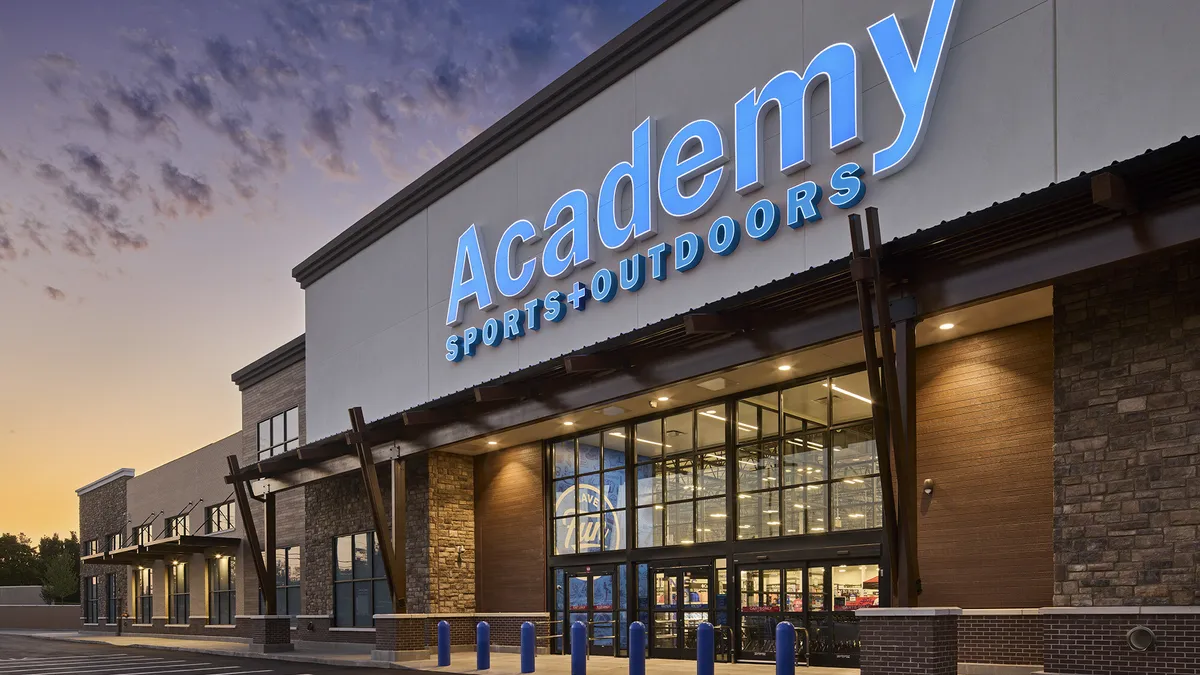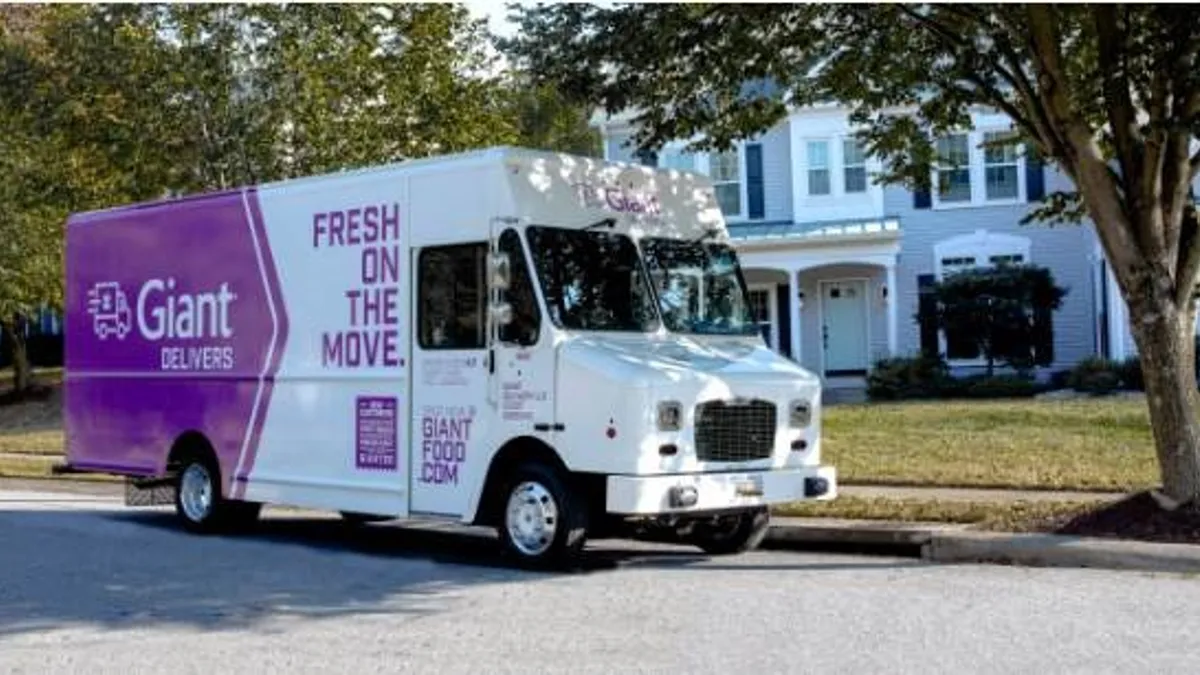Panic-shopping-induced inventory challenges and supplier disruptions resulted in stockouts and procurement issues for retailers in the early days of the pandemic. But the recovery from the early days in March has not been the same across product categories.
Toilet paper, flour and other staples have started to return to the aisles, as shoppers adopt more normal behavior and as the grocery supply chain adapts to the new normal.
"Our operational and commercial teams have positively responded to the extraordinary demand caused by the pandemic, driven by a major shift in consumer behavior toward eating at home with a resurgence of cooking simple meals and increased snacking occasions," Campbell Soup CEO Mark Clouse said earlier this month

Panic buying was just one issue that caused supply issues earlier this year, said Burt White, executive vice president of CPG and retail at Maine Pointe, a supply chain and operations consulting firm.
"The other issue, in reference to disruption, was, really, people at work," White said.
Retailers and manufacturers faced a drop in available labor as workers called out and stayed home at the beginning of the pandemic, White said.

Toilet paper became the poster child of panic buying in March and April. Data from IRI CPG Supply Index shows the category took a significant hit in supply as panic buying began, and it has yet to fully recover.
"We never anticipated that demand," White said. As a result, producers struggled to keep up.

The supply-demand trend also played out in household cleaning products.
Manufacturers ramped up production and increased capacity, but everything from the plastic packaging for cleaning supplies to the disinfecting compounds became hard to procure.
The supply constraints extended to the store-level, as many of the materials in the cleaning and disinfectant supply chains are still in short supply, including the ideal material for disinfectant wipes that is the same material used to make medical face masks.
Much of this boils down to the fact that producers weren't prepared for this level of demand. No one could have forecast the scale of disruption, according to Doug Baker, vice president of industry relations at the Food Marketing Institute.
Farmers planted crops for the demand they expected without a pandemic, packaging plants tooled assembly lines for demand without a pandemic, and grocery stores procured what they needed for demand without a pandemic. Then there was a pandemic.
"Even dealing with a natural disaster doesn't prepare you for this," Baker said, adding that it did provide some insight when it came to getting waivers to move inventory across state lines during lockdowns and making sure truckers and employees had what they needed.
"Even dealing with a natural disaster doesn't prepare you for this."

Doug Baker
Vice President of Industry Relations at the Food Marketing Institute
As demand poured in, many food manufacturers pumped out product as quickly as possible.
Clouse talked about Campbell adding capacity to its production of soup and Goldfish, with plans to add capacity to its snack products, specifically its potato chip brands.
But it still wasn't enough to meet the demand for some brands with the scale of Christmas Eve seven days a week. So, manufacturers went through SKU rationalization.
"What that did is it allowed them to open up their machine even more, because every time I change a brand, I change a formula, I change your pack size, I have to shut the machine down," Baker said.
Complex supply chains, in particular, can struggle when it comes to making changes to demand swings. So, simplifying the number of SKUs is one immediate way companies were able to deal with getting more products into the store, White said.
One area that continues to struggle is the meat sector. But dairy, which saw a similar downturn in March, has seen its supply grow. Part of this is due to labor throughout the meat supply chain, Baker said.

"If you think about taking milk from the dairy to its point of use, there's a few less steps in the process than taking a side of beef, or pork or chicken and getting it into a processed retail package," he said. "There's more steps and every single one of those steps has human intervention along the way."
The coronavirus has required meat producers to do more with less in terms of labor, as they have had to implement social distancing in their facilities, he said.
Most factories are up and running now, White said. But changes to consumer eating habits, including greater demand for frozen meals, could keep supply lower than before, he said.
"People are moving more to pre-packaged and pre-made foods, if you will, for ease of use," White said. "I think Americans realize that they're not good cooks."
Nestle CFO François Roger told analysts that double-digit sales growth was led by increased sales for DiGiorno, Hot Pockets and Stouffer's.

Many producers and retailers will likely adopt the changes they've made during the pandemic long term, Baker said. Companies will keep an even closer eye on changing consumer demand moving forward, he said.
"But more importantly, understand our supplier's suppliers and how [and] where they're vulnerable, where they're possibly vulnerable, what is the risk associated with that, and what are alternatives," he said.
The changes in consumer buying patterns are a trend food manufacturers have spoken about in recent earnings calls. And one cause is students attending school remotely.
"One brand which has seen a resurgence of demand is Skippy," Hormel Foods CEO Jim Snee told analysts last month. "While the entire peanut butter category has seen growth as kids stay at home, the Skippy brand has thrived and outpaced the competition."
Snee added that Hormel expects to see increased demand, and it currently doesn't have any safety stock to draw on. So, it's ensuring its "plants run as efficiently and effectively as possible," he said.
"Many of those SKUs that were suspended won't come back.

Burt White
Executive Vice President of CPG and Retail at Maine Pointe
The grocery store of the future will likely look different than what consumers experienced in February 2020, White said.
"Many of those SKUs that were suspended won't come back," he said, adding that empty shelf space will leave room for more innovative products. "You'll see some really cool new items that come out. And they might even be items that have been generated as a result of the pandemic."
This story was first published in our weekly newsletter, Supply Chain Dive: Operations. Sign up here.























